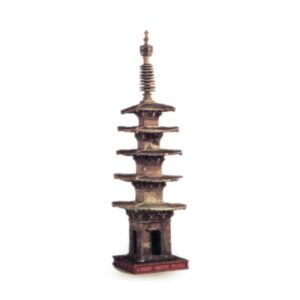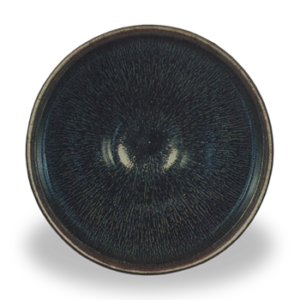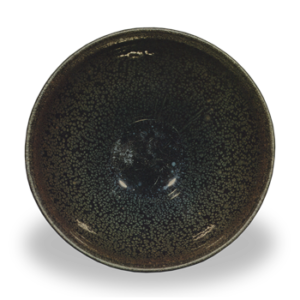
Although generally called a tiled pagoda, the actual pagoda is not tiled but ceramic. It is also called a ceramic pagoda. It is a smaller version of a wooden pagoda, which is disassembled and baked into the shaft, roof, and sorin, and these parts are then assembled to make a single pagoda. The roof tiles, child’s wing fly-ways, and other details of the building are faithfully represented, and the perfectly restored tower excavated in Tamako Town, Higashimurayama City, Tokyo, is 197 cm tall.
The excavated kiln sites, which number more than 20, are located in the northern Kanto, Chubu, and Kyushu regions, indicating that tiles were produced in various regions.
There are nearly a hundred sites other than the above, but in many cases the state of excavation of the tile towers is not clear, leading to theories that the tile towers were erected on the site of a temple to raise funds for the construction of a temple, or that the towers themselves were intended as objects of worship or substitutes for wooden pagodas. However, the most popular theory is that it is a sign of Ishimura Kiei’s tomb. The production of tiled pagodas began in the Nara period (710-794), reached its peak in the Heian period (794-1192), and continued until the Edo period (1603-1868). (Ishimura, Yoshihide, “Tile and Mud Pagodas,” New Edition of Archaeology, 8)








